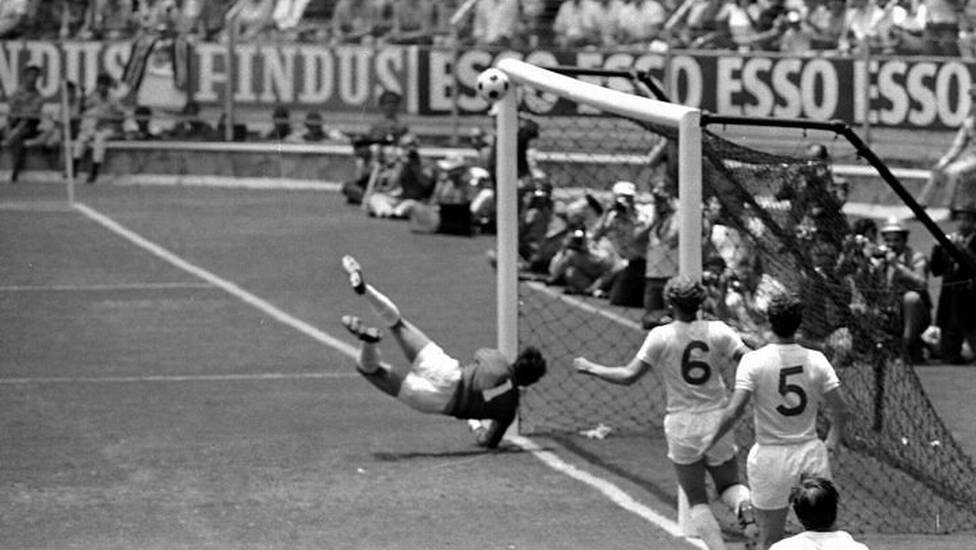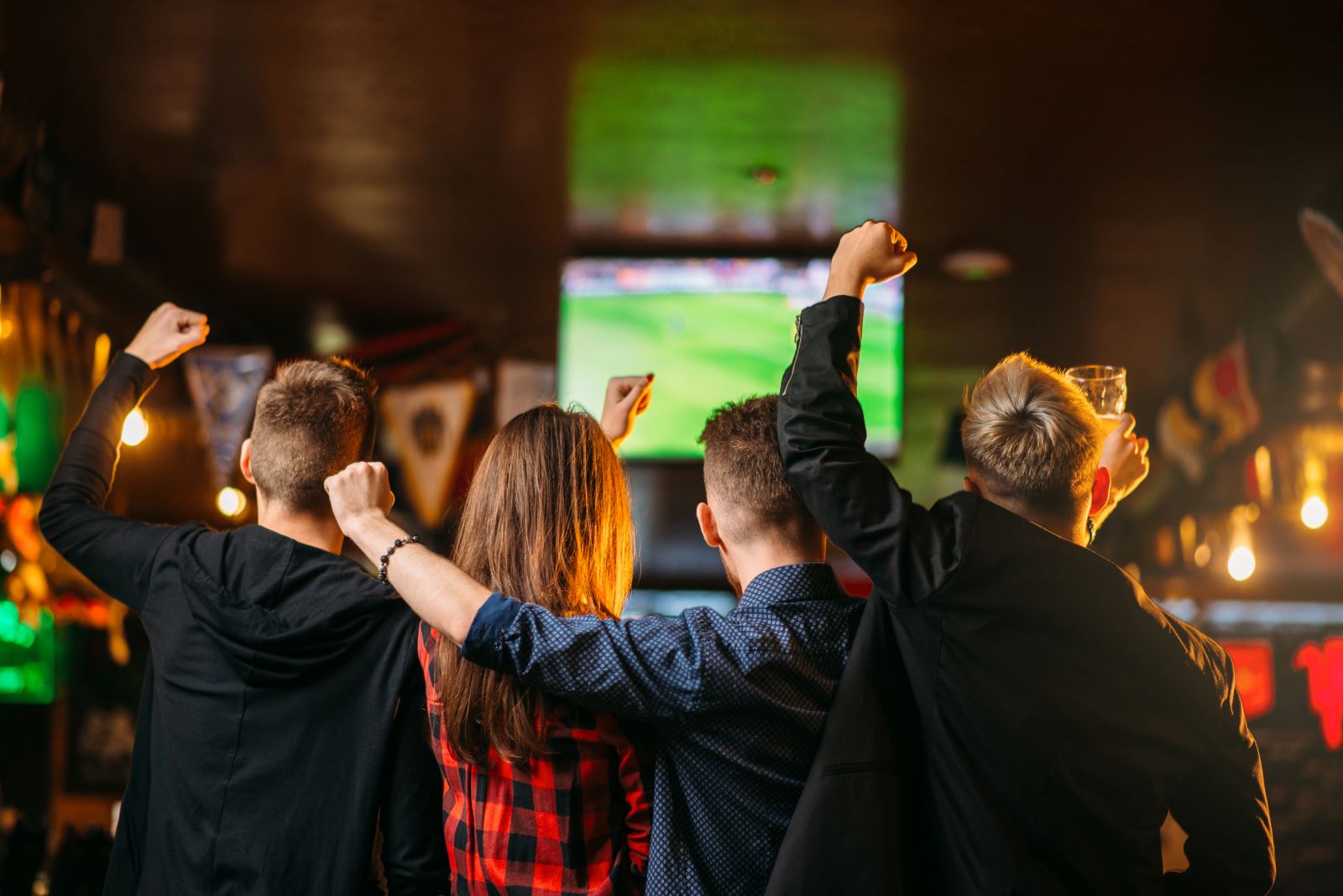The British pub and sport have been linked for centuries, going back to the days when cock-fighting and prize fights were held as entertainment for drinkers in pubs and ale-houses. But there is a special association between the pub and football. In the early days of football, in the 19th century, the pub and the local football club were closely linked; football was a growing game in working-class communities, which made the new clubs based around local neighbourhoods a good fit with their local pubs.
.jpg)
Pubs and football - Using pubs as player changing rooms
Some pubs were used by the players as changing rooms, and fans and players would gather there before and after games. Tottenham Hotspur were helped in their early years by the brewery that ran the local pub, the White Hart, and which provided a ground in the lane (White Hart Lane) running behind the pub. This connection between pubs and football is a tradition that continues to this day, with countless Sunday league football teams being based around local pubs.

The British passion for watching football in bars
But it’s only relatively recently that the British have been watching football in pubs in large numbers. When football was first televised in the 1950s, it was watched at home. The 1962 World Cup in Chile was covered by BBC TV – but viewers had to wait three days while the rolls of film were flown back to the UK and edited for broadcast.

Watching football world cups with family and friends
Most people who remember the 1966 World Cup will recall watching it with family and friends, crowded around a black-and-white TV as the rollercoaster game took its course. By 1970 colour television had arrived, but still, most football was watched at home as people huddled around watching the slightly grainy satellite images and listening to David Coleman’s crackly commentary (“Gordon Banks”!). As time went on, some pubs began showing football on TV, but it would usually be in the background, often with the sound turned down.
Football as a mainstream hobby

In the 1990s things started to change. Football was moving beyond its traditional working-class fan-base and becoming popular among a wider audience.
The Premier League arrived, and Sky started showing pay-per-view football, which meant that those who were not Sky subscribers often went to the pub to watch games. Also, crucially, the televisions themselves started to get bigger. During the Euro 96 football tournament, held in England, watching football in pubs suddenly became popular as fans followed the progress of the England team (and others) to the semi-finals.
Coping with demand - Bars and football matches
Some pubs were taken by surprise and overwhelmed by the numbers; they found they hadn’t enough pub chairs or tables to accommodate the viewers. But two years later, for the 1998 World Cup, they were ready, setting aside areas for fans to watch, setting up big screens and buying in new furniture. Across the country, millions of fans congregated in pubs, bars, sports clubs and other venues to watch the tournament, up to and beyond England’s defeat to Argentina in the quarter-finals.
Brits prefer watching sport in pubs and bars to the 'real thing'
As a fascinating research paper on pubs and football by Kevin Dixon at Teesside University says, many football fans now prefer watching football in the pub to the real thing. For one thing, with today’s high prices for Premier League football, it’s cheaper. And for another, some fans prefer the camaraderie of the pub, rather than sitting next to a bunch of strangers in the stadium. (Also, the law forbids drinking alcohol within sight of the pitch in football stadiums.) In 2002, as another research paper shows, more people watched live sport in a pub or bar than paid to watch live sporting events.
2018 Russian world cup
All of which brings us to 2018, and the forthcoming World Cup. This year’s tournament is being held in Russia, and offers the owners of pubs, bars, sports clubs and other venues the chance to attract customers throughout the tournament. The tournament kicks off at 4pm UK time on June 14th with Russia’s game against Saudi Arabia.
The final takes place a month later in Moscow on July 15th. UK kick-off times are mostly at 1pm, 4pm and 7pm, with some games starting at 11am. Spare a thought for fans in Russia: matches have been timed to attract maximum TV audiences in western Europe, which means that some games don’t kick off until 10pm Russia time.
Football fans today are an inclusive bunch; they will of course be watching England’s games in great numbers, but they will also want to watch other games, such as, Germany v Sweden on June 26th. And it’s worth thinking about your local population.
If you have a substantial number of Polish people in your area, you could make a special event of screenings of Poland’s games, which begin with Poland v Senegal at 4pm on June 19th.
Watching England vs Tunisia - Football World Cup in bars - June 18th 2018
England’s games begin with a match against Tunisia on June 18th at 7pm UK time. This is a Monday night, not normally a particularly busy time for pubs and bars. So this is a chance to bump up your takings. It’s vital of course to have a big screen located where everyone in the bar can see it. For the afternoon or evening of the match, you might want to re-arrange your furniture – more chairs, fewer tables.
Some people will be happy to stand at the back. This might be a good time to invest in some new furniture. Stacking chairs would be useful; they could be brought out for matches to increase your seating capacity, and stored away until they’re next needed. Today’s stacking chairs are relatively inexpensive and durable, built to withstand the hard wear and tear of a commercial environment, while still being compact enough to stack away. Trent Furniture’s Remo chair is sturdy, affordable, stackable and practical.
English pubs showing the 2018 football world cup
Pubs that show football on big screens will have different atmospheres depending on the kind of customers they attract and the layout of the furniture. Some will be boisterous and rowdy, others more laid-back. A pub or bar can influence the atmosphere by the way it sets out furniture. Rows of chairs with no tables and standing room at the back will foster a more raucous environment while setting out chairs with tables will lead to a more sedate atmosphere; people will be sitting at their tables watching the game but also talking to each other. The choice is yours.
Football fans and British bars
Finally, it’s worth bearing in mind that not everyone is a football fan. There are customers who will walk into a pub or bar, see a big screen showing football, and walk straight out again. Football fans, especially if they are loud and vocal, can be off-putting. So if your bar, pub or club has a number of rooms, you could consider setting one aside as a space where people can talk and drink quietly.
This could be furnished with softer, more comfortable chairs, sofas or armchairs, to encourage people to sit back and linger. You could make a point of labeling it as a “football-free zone”.
But for those who decide to watch the World Cup in a bar or pub or club, the viewing experience will be better than ever before. Big screens offer crisp, high-definition images that everyone can see. And with today’s slow-motion replays, and with goal-line technology in use in this year’s World Cup, there will be no more 1966-type arguments over whether the ball crossed the goal-line.